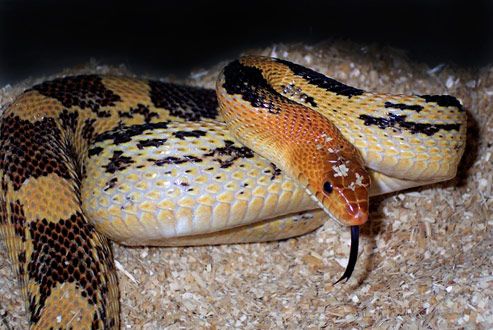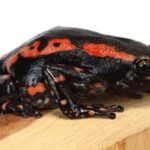The Alicante snake is one of the fascinating creatures that roam the natural landscapes of Spain. Despite being elusive and often misunderstood, this snake plays a critical role in the local ecosystem. If you’re curious about the Alicante snake’s physical characteristics, behavior, habitat, and other aspects, you’ve come to the right place. This guide will provide you with a comprehensive understanding of the Alicante snake, including its fascinating traits, habitat, diet, and much more.
Introduction
When we think of snakes, many of us conjure up images of fearsome predators or dangerous creatures. However, not all snakes should be feared. The Alicante snake, found in Spain’s Mediterranean region, is an excellent example of a species that contributes significantly to the environment. From its physical appearance to its diet and habitat, there’s so much to discover about this particular snake.
In this article, we will explore the Alicante snake in detail, providing information about its classification, physical traits, behavior, and its role in the ecosystem. Whether you’re a nature enthusiast, a traveler, or simply curious about local wildlife, understanding this snake will enhance your appreciation for Spain’s natural diversity.
What is the Alicante Snake?
The Alicante snake, also known by its scientific name Coronella girondica, is a non-venomous species native to the Iberian Peninsula. It is often mistaken for more dangerous snakes due to its similar appearance to venomous species. This snake has earned a reputation as a shy and elusive creature, primarily staying hidden in its natural habitat.
Scientific Classification and Characteristics
- Scientific Name: Coronella girondica
- Family: Colubridae
- Order: Squamata
- Status: Not endangered, though local populations can be threatened by habitat loss.
Despite being harmless to humans, the Alicante snake’s sleek appearance, which includes a series of dark markings along its back, may cause some concern. However, it poses no threat to human life and is typically more inclined to avoid humans than engage.
Why the Alicante Snake is Fascinating
What makes the Alicante snake fascinating is its ability to adapt to various environments. It has evolved to thrive in rocky, dry areas, often seeking shelter in crevices or beneath vegetation. This adaptability allows it to maintain a stable population in the region, where it plays an essential role in controlling the population of small mammals and insects.
Habitat of the Alicante Snake
The Alicante snake is primarily found in the Mediterranean regions of Spain, specifically in Alicante, from which it gets its name. However, it can also be spotted in surrounding areas like Valencia and Murcia. This species favors habitats where there are plenty of rocky outcrops, shrubs, and warm, dry climates.
Geographic Location and Distribution
Alicante is the main region where this snake resides, but the Alicante snake can also be found in other Mediterranean countries, stretching across southern France and parts of Italy. Its presence in these regions is largely due to the favorable climate and availability of sheltering places like dry stone walls, rock piles, and shrubs.
Environmental Conditions Preferred
The Alicante snake thrives in hot, dry climates, typical of Spain’s Mediterranean zone. It prefers rocky terrain and areas with dense vegetation that provide ample hiding spots. The species is typically found in altitudes ranging from sea level to around 1,000 meters. The moderate climate allows the Alicante snake to hunt and bask in the sun, making it a perfect fit for this region.
Physical Appearance of the Alicante Snake
The Alicante snake is a relatively small species, making it less intimidating than its more prominent relatives. Despite its unassuming appearance, this snake’s physical traits are perfectly suited to its lifestyle and environment.
Size and Length
Adult Alicante snakes typically range in size from 50 to 70 cm (20 to 28 inches). Some individuals may grow up to 90 cm, but they rarely exceed that length. The compact size makes them excellent at squeezing into narrow crevices and staying out of sight.
Color and Markings
The Alicante snake has a distinctive appearance, with a light brown or grayish body. It features dark, irregular spots along its back and sometimes along its sides. These markings help it blend seamlessly into the rocky environments it inhabits, offering excellent camouflage against predators.
Behavior and Diet of the Alicante Snake
While the Alicante snake isn’t aggressive, its behavior is interesting to study. It is a solitary creature that often spends much of its time hiding in crevices or under vegetation. Unlike some more aggressive snakes, the Alicante snake would rather flee than fight.
Feeding and Prey
The Alicante snake is carnivorous, preying on small mammals, lizards, and amphibians. It uses constriction to subdue its prey, wrapping its body around small animals and suffocating them. Its primary diet consists of rodents, which it catches using stealth and quick strikes. The Alicante snake may also consume insects and small birds on occasion.
Activity and Temperament
This species is primarily active during the warmer months of the year, particularly in spring and summer. It tends to be most active during the early morning and late evening when temperatures are cooler. Although generally shy and non-aggressive, it will defend itself if cornered or threatened. If encountered, the Alicante snake prefers to retreat into the nearest shelter.
The Venom of the Alicante Snake
One common misconception about the Alicante snake is that it is venomous. However, this is not the case. The Alicante snake is non-venomous, relying on constriction to subdue its prey. Its mild temperament and lack of venom make it a relatively harmless creature, even for people who may be wary of snakes.
Venomous or Non-Venomous?
Unlike some of its more dangerous relatives, the Alicante snake does not produce venom. It is equipped with small, sharp teeth that allow it to grasp and hold its prey, but it does not have fangs capable of injecting venom.
Potential Threat to Humans
Despite its intimidating appearance, the Alicante snake poses no real threat to humans. Its bites, while painful, are not venomous and do not require medical treatment. However, it’s always best to avoid handling any wild snake, as they may bite in self-defense if startled.
Read more about Leopard Gecko’s Life
Conservation Status of the Alicante Snake
The Alicante snake is currently listed as a species of least concern by the International Union for Conservation of Nature (IUCN). However, like many species, it faces some challenges to its long-term survival. The primary threats to the Alicante snake include habitat loss, human activity, and climate change.
Threats and Challenges to the Species
Urbanization and agricultural expansion have significantly reduced the Alicante snake’s natural habitat. Furthermore, human encroachment often leads to roadkill accidents, particularly in areas where the snake crosses roads to access its prey. While the species is not endangered, these ongoing threats could impact its population in the long term.
Conservation Efforts and Protections
Several conservation efforts are underway to protect the Alicante snake’s habitat. These include habitat restoration projects, wildlife corridors to help snakes move safely, and public education campaigns to raise awareness about the importance of preserving local wildlife. Additionally, certain areas where the Alicante snake thrives are now designated as protected zones to prevent further destruction.
How to Identify the Alicante Snake
Recognizing the Alicante snake in the wild can be challenging due to its similar appearance to other species. However, there are a few key characteristics that make it easier to identify.
Key Identification Features
- Color: The Alicante snake’s body is generally light brown or gray with dark spots along its back.
- Size: Typically, it measures between 50 and 70 cm in length, though larger individuals may reach up to 90 cm.
- Markings: The dark markings along the back are irregular and may vary slightly between individuals.
Differences from Other Snakes in the Region
The Alicante snake is often confused with other non-venomous species like the smooth snake (Coronella laevis) or the western whip snake (Hierophis viridiflavus). However, the Alicante snake is distinguished by its particular color pattern, the shape of its head, and the size of its body.
Conclusion
The Alicante snake is a fascinating and largely misunderstood creature. This non-venomous snake plays an important role in its ecosystem, controlling the populations of small mammals and other prey. While it may be elusive and shy, it is not dangerous to humans, making it a creature worth appreciating for its role in nature. Understanding the Alicante snake’s physical traits, behavior, and conservation status can help us protect it and ensure it thrives for generations to come.
FAQ Section
1. Is the Alicante snake dangerous?
No, the Alicante snake is non-venomous and poses no significant threat to humans.
2. Where can I find the Alicante snake?
The Alicante snake is native to the Mediterranean regions of Spain, including Alicante, Valencia, and Murcia.
3. What does the Alicante snake eat?
The Alicante snake primarily feeds on small mammals, lizards, and occasionally insects and amphibians.
4. How big does the Alicante snake get?
The Alicante snake typically grows to between 50 to 70 cm, with some individuals reaching 90 cm.
5. Can the Alicante snake be kept as a pet?
It is not recommended to keep wild snakes as pets. It is best to observe them in their natural habitat.
6. Is the Alicante snake venomous?
No, the Alicante snake is non-venomous and uses constriction to subdue its prey.
7. How can I identify the Alicante snake?
Look for a light brown or gray snake with dark irregular spots along

